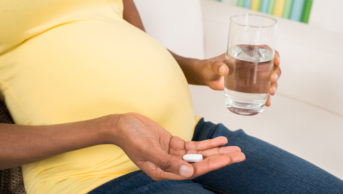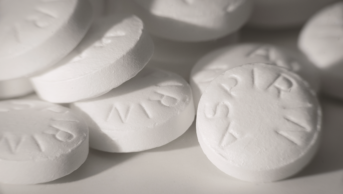
Shutterstock
Prenatal exposure to paracetamol (acetaminophen) is associated with an increased risk of behavioural problems among children by the age of seven, according to a study.
Using data from a cohort of 7,796 mothers and their children, researchers discovered prenatal paracetamol use at 18 weeks was associated with a 20% greater risk of conduct problems and a 23% increased risk of hyperactivity symptoms in children at the age of seven years.
The team found no link between maternal postnatal paracetamol use or a partner’s paracetamol use and behavioural problems, which the researchers say indicates the results are not explained by potential confounding behavioural or social factors.
However, the researchers, who published their findings in JAMA Pediatrics
[1]
(online, 15 August 2016), say the results do not mean that women should be advised to avoid or limit paracetamol use during pregnancy.
“Although these results could have implications for public health advice, further studies are required to replicate the findings and to understand mechanisms,” says lead author Evie Stergiakouli from the University of Bristol.
“The risk of not treating fever or pain during pregnancy should be carefully weighed against any potential harm to the offspring. For example, untreated fever during pregnancy can lead to premature labour,” she adds.
The researchers, who measured their findings using the Strengths and Difficulties Questionnaire (SDQ), used data from the Avon Longitudinal Study of Parents and Children, a birth cohort of children and their mothers enrolled between 1991 and 1992. Among a total of 7,796 mothers, 4,415 (53%) women took paracetamol within three months of the 18th week of pregnancy and 3,381 (42%) took it within three months of the 32nd week. Overall, 6,916 (89%) mothers reported postnatal paracetamol use, as did 3,454 (84%) of partners.
Maternal paracetamol use at 32 weeks was associated with a 42% increased odds of conduct problems and a 31% increased odds of hyperactivity symptoms. The risk of emotional symptoms and total difficulties was also increased by 29% and 46%, respectively.
There was no association with any SDQ domain with maternal or partner postnatal paracetamol use between birth and the age of seven years, they found.
Paracetamol is currently considered a safe drug during pregnancy and a large number of pregnant women use it: greater than 50% of pregnant women in the United States and 50–60% in the EU. But observational studies from a number of countries have identified a potential detrimental impact on infant neurodevelopment. There has been debate though about whether such findings may be confounded by socioeconomic or familial factors.
Hedvig Nordeng, professor at the school of pharmacy at the University of Oslo, says that the results from this study strengthen our understanding of how familial factors could modify the relationship between paracetamol use and infant neurodevelopment.
“It strengthens our belief that the finding is not entirely due to familial factors, but we still cannot exclude the fact that it may be due to severity of maternal pain conditions or other unmeasured factors,” she says. “As with all studies, there are some limitations to keep in mind, and we still need to explore the impact of dose and duration of paracetamol use, and use of co-medications.”
She also points out that it is important not to scare pregnant women and that some alternative painkillers, such as non-steroidal anti-inflammatories, may actually pose a greater risk to mother and child. Women with pain conditions should discuss their different options with their healthcare professional, she adds.
References
[1] Stergiakouli E, Thapar A & Davey Smith G. Association of acetaminophen use during pregnancy with behavioral problems in childhood. JAMA Pediatrics 2016. doi: 10.1001/jamapediatrics.2016.1775


